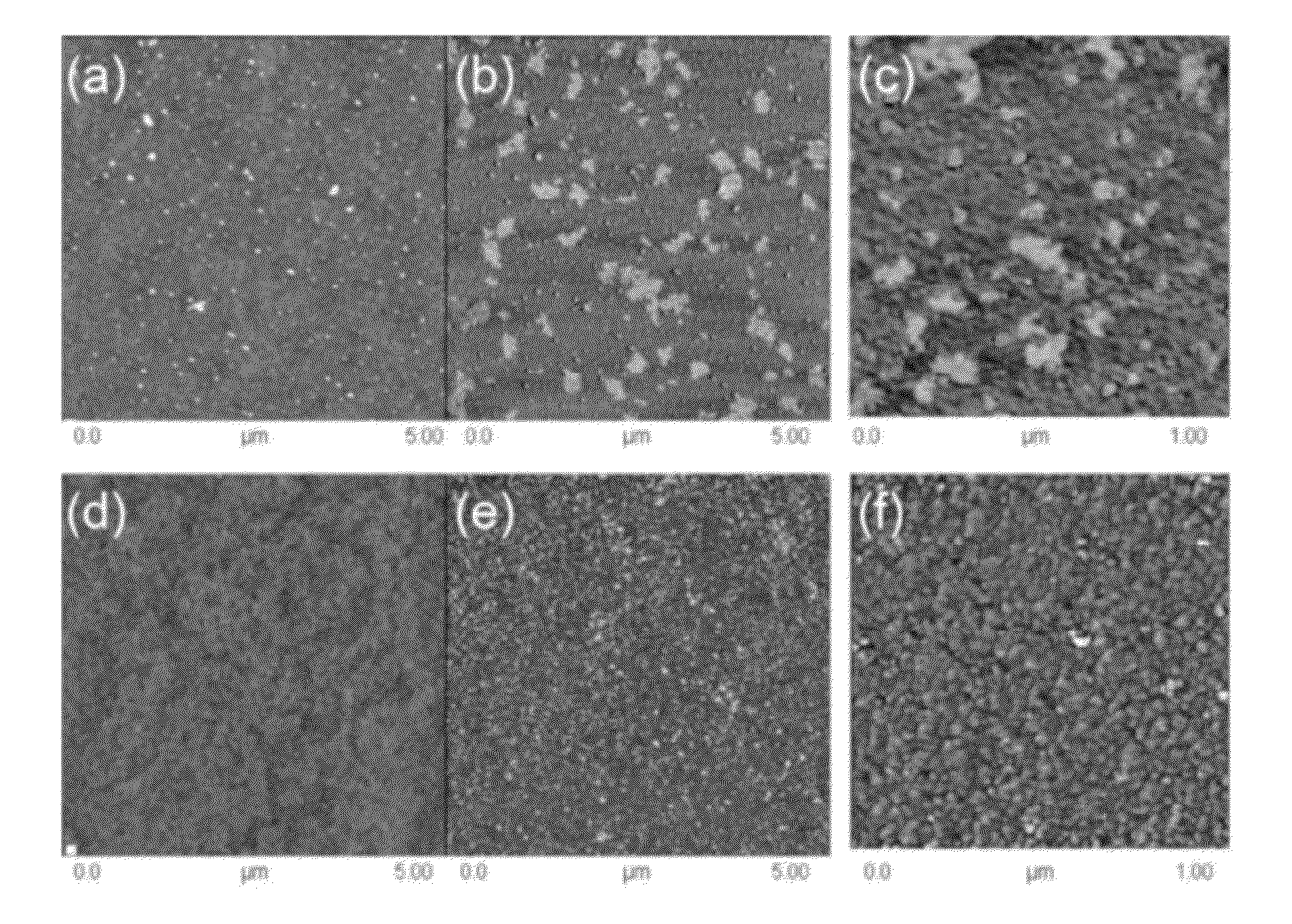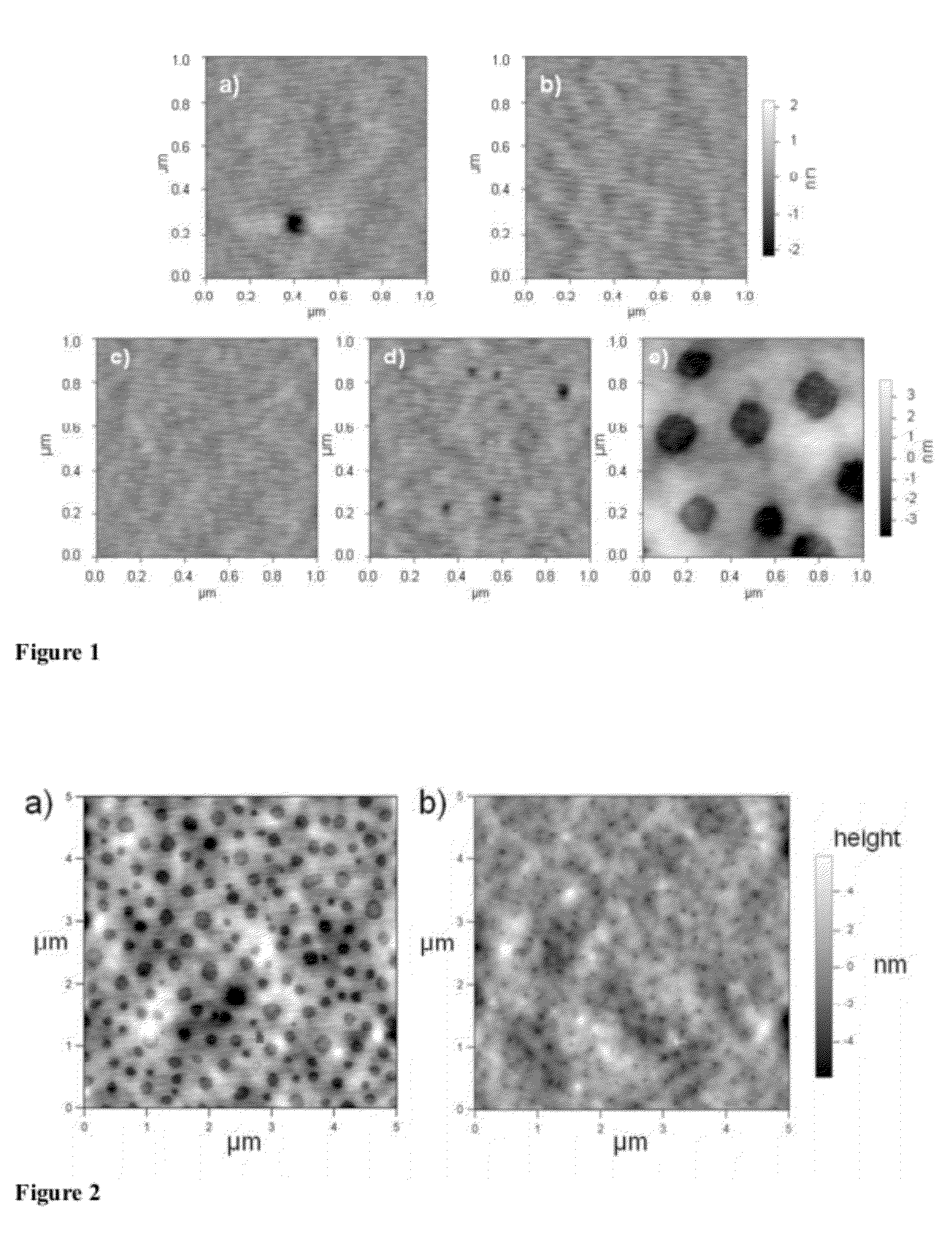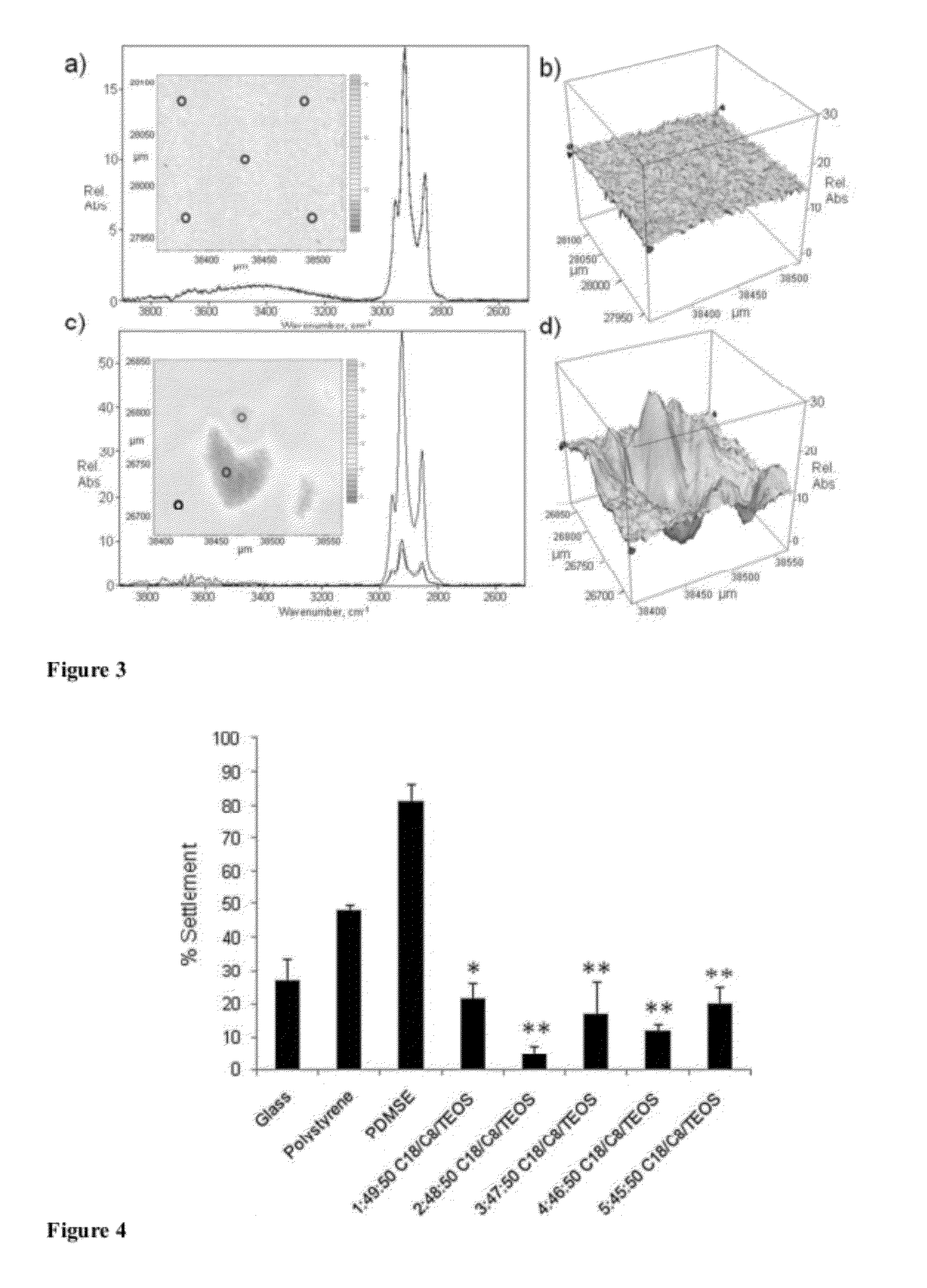Anti-Fouling Coating Compositions and Methods For Preventing the Fouling of Surfaces
a technology of anti-fouling coating and composition, which is applied in the direction of biocides, silicon oxides, silicon compounds, etc., can solve the problems of increasing fuel consumption due to drag, and the use of biocides in anti-fouling paints is becoming increasingly restricted, so as to prevent the attachment or growth of biofoulants, prevent fouling, and prevent the effect of surface fouling
- Summary
- Abstract
- Description
- Claims
- Application Information
AI Technical Summary
Benefits of technology
Problems solved by technology
Method used
Image
Examples
example 1
[0077]In this example, Three- and four-component, hybrid xerogel surfaces that have high contact angles (>95°) and that perform as foul-release surfaces are described.
[0078]Three-component Xerogels. Twenty-five (25) examples of three-component, hybrid xerogel surfaces incorporating the embodiments described above that perform as foul-release surfaces for the release of juvenile barnacles of Balanus amphitrite and / or 7-day old sporelings of the macrofouling alga Ulva linza are compiled in Table 1 as entries 9-33. In Table 1, entries 1-8 represent glass and PDMSE standards (entries 1 and 2, respectively), examples of two-component hybrid xerogels containing short-chain alkyl groups (entries 3 and 4), short-chain perfluoroalkyl groups (entry 5), long-chain perfluoroalkyl groups (entries 6 and 7), and a dialkylaminoalkyl group (entry 8) in combination with a tetraalkoxysilane (TEOS).
TABLE 1Fouling-release Performance of Three-component, Hybrid Xerogel SurfacesIncorporating Aminoalkyltri...
example 2
[0194]This is an example of the preparation and characterization of xerogel films of the present invention.
[0195]This example provides preparation and characterization of four-component xerogel films of 1 mole % n-octadecyltrimethoxysilane (C18) and 50 mole % tetraethoxysilane (TEOS) in combination with 1-24 mole % tridecafluoro-1,1,2,2-tetrahydrooctyltriethoxysilane (TDF) and 25 to 48 mole % n-octyltriethoxysilane (C8) and a 1:49:50 mole % C18 / TDF / TEOS. Settlement of barnacle cyprids and removal of juvenile barnacles, settlement of zoospores of the alga Ulva linza, and strength of attachment of 7-day sporelings (young plants) of Ulva were compared amongst the xerogel formulations. Several of the xerogel formulations were comparable to poly(dimethylsiloxane) elastomer with respect to removal of juvenile barnacles and removal of sporeling biomass. The 1:4:45:50 and 1:14:35:50 C18 / TDF / C8 / TEOS xerogels displayed some phase segregation by atomic force microscopy (AFM) pre- and post-imme...
example 3
[0272]This is an example of the preparation and characterization of xerogel films of the present invention.
[0273]Five non-biocidal xerogel coatings were compared to two commercial non-biocidal coatings and a silicone standard with respect to antifouling (AF) / fouling-release (FR) characteristics. The formation and release of bacterial biofilm of Cellulophaga lytica, the attachment and release of the microalga Navicula incerta, and the fraction removal and critical removal stress of reattached adult barnacles of Amphibalanus amphitrite were evaluated in laboratory assays. Correlations of AF / FR performance with surface characteristics such as wettability, surface energy, elastic modulus, and surface roughness were examined. Several of the xerogel coating compositions performed well against both microfouling organisms while the commercial coatings performed more poorly toward the removal of microalgae. Reattached barnacle adhesion as measured by critical removal stress was significantly...
PUM
 Login to View More
Login to View More Abstract
Description
Claims
Application Information
 Login to View More
Login to View More - R&D
- Intellectual Property
- Life Sciences
- Materials
- Tech Scout
- Unparalleled Data Quality
- Higher Quality Content
- 60% Fewer Hallucinations
Browse by: Latest US Patents, China's latest patents, Technical Efficacy Thesaurus, Application Domain, Technology Topic, Popular Technical Reports.
© 2025 PatSnap. All rights reserved.Legal|Privacy policy|Modern Slavery Act Transparency Statement|Sitemap|About US| Contact US: help@patsnap.com



